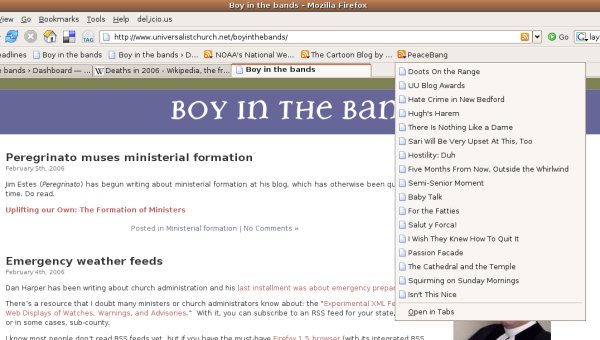The Rev. Thom Belote has been writing about growth numbers following the UUA member congregation certification. I have a different take than he, though I should add the more years I do this the less I learn and the more I’m inclined to use my intuition. Both suggest the UUA isn’t growing enough to stave off “heat death” and that’s because we don’t start enough new churches rather than the one’s that we do have aren’t growing fast enough.
How I came up with this. I compared the churches that registered in 2003 (the first year I looked at the numbers) with this year’s. This helps give some scope, and the problems in 2004 and 2005 with federated churches counting their whole congregations (and inflating the figures) wasn’t in evidence in 2003. Plus, the zigzagging that occurs from ministerial departures and arrival are flattened a bit. The Unitarian Universalist Church of the Philippines isn’t in there because they didn’t certify in 2003; in any case, they really are a denomination in their own right. I count the CLF because it is a part of the North American setting. Other non-North American churches are so small as to not sway the figures, so I don’t filter them out.
This means of course that the growth from new congregations aren’t included, but I hate to say that doesn’t account for too much.
For this set, the 2003 membership was 149,705; the 2006 membership was 152,669: a three-year increase of 2.65% A bit worrysome.
But some churches, over three years, grew quite well. A couple, I note, grew after shrinking quite badly in the few years before, but they did come back, and some churches never do. The top three in four categories are:
Large. Over 550 in 2006.
- All Souls Church, Unitarian, Washington, DC. 401 to 636. 158%
- White Bear Unitarian Universalist Church, Mahtomedi, Mn. 398 to 560. 141%
- Jefferson Unitarian Church, Golden, Col. 531 to 701. 134%
Mid-sized. Between 150 and 549 in 2006.
- Unitarian Universalist Church of Northern Nevada, Reno. 123 to 184. 150%
- Cedars Unitarian Universalist Church, Bainbridge Island, Wash. 106 to 154. 145%
- Unitarian Universalist Fellowship of Fredericksburg, Virginia. 123 to 175. 142%
Small. Between 35 and 149 in 2006.
- Foxborough (Mass.) Universalist Church. 24 to 52. 217%
- Unitarian Universalist Congregation of Swannanoa Valley. 45 to 86. 191%
- Gaia Community, Kansas City, Mo. 21 to 40. 190%
Very small. Under 34 in 2006.
- First Parish Universalist, Malden, Mass. 10 to 30. 300%
- Big Sky Unitarian Universalist Fellowship, Helena Mt. 17 to 32. 188%
- Unitarian Universalist Fellowship, Austin, Texas. 14 to 24. 171%



